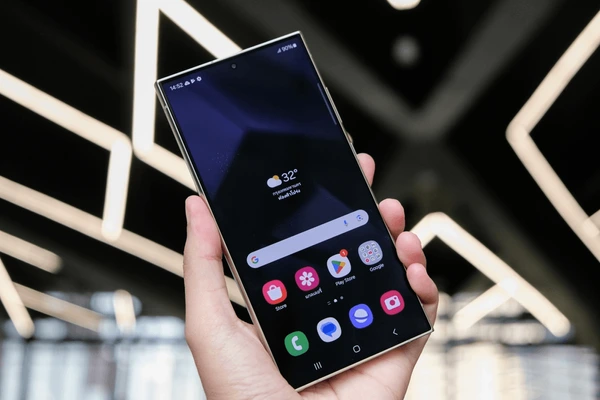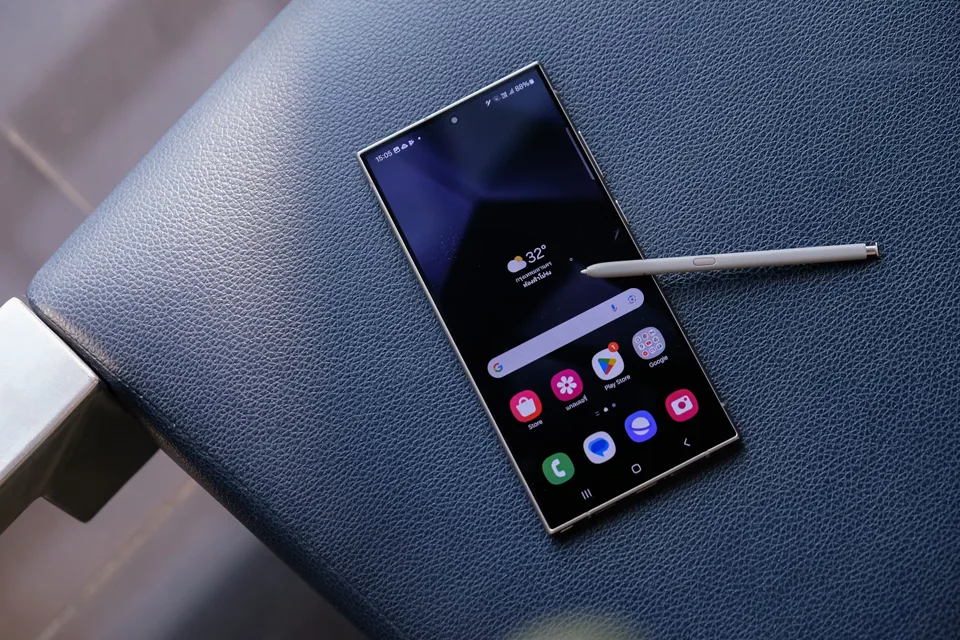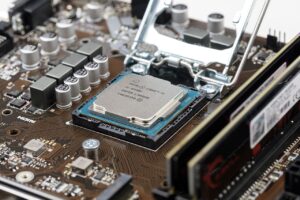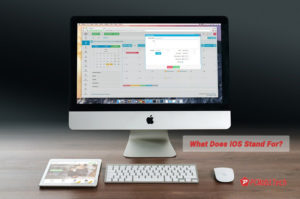In the competitive world of smartphone technology, display innovation is a crucial factor. You might have heard about AMOLED displays dominating the premium segment for years. But now, LTPO (Low-Temperature Polycrystalline Oxide) is taking center stage. So, what exactly is LTPO, and how does it compare to AMOLED? Let’s dive in.
Quick Links
What is AMOLED?

Image Source: Samsung.com
AMOLED (Active Matrix Organic Light Emitting Diode) has been the go-to display technology for high-end smartphones. It features organic compounds that light up when an electric current passes through them, offering stunning colors and deep blacks.
Advantages of AMOLED Displays
- Vibrant Colors: AMOLED displays produce vivid and accurate colors.
- True Blacks: Each pixel emits its own light, allowing for true black representation.
- Energy Efficiency: Compared to LCDs, AMOLED consumes less power when displaying darker content.
- Thin and Flexible: The technology enables sleek, curved screens.
Limitations of AMOLED Technology
- Power Drain: High refresh rates on AMOLED screens significantly impact battery life.
- Burn-in Issues: Extended use can cause static images to leave permanent marks on the screen.
- Costly: Manufacturing AMOLED displays is expensive compared to LCDs.
What is LTPO?

Image Source: Shutterstock.com
LTPO stands for Low-Temperature Polycrystalline Oxide. It’s an advanced backplane technology used in OLED displays. LTPO enables screens to dynamically adjust their refresh rates based on what’s happening on the screen, making them more power-efficient.
LTPO panels combine LTPS (Low-Temperature Polycrystalline Silicon) and IGZO (Indium Gallium Zinc Oxide) technologies. This combination allows the display to vary its refresh rate from as low as 1Hz to 120Hz or higher, depending on user activity.
Key Components: LTPS, IGZO, and Hybrid Technologies
- LTPS: Manages switching circuits efficiently.
- IGZO: Drives the display, contributing to lower power consumption.
- Hybrid Technology: Brands like Samsung use Hybrid-Oxide and Polycrystalline Silicon (HOP) to optimize performance.
How LTPO Displays Dynamically Adjust Refresh Rates
Adaptive Refresh Rate Mechanism
Unlike conventional AMOLED panels, which operate at a constant refresh rate, LTPO screens adjust their refresh rates dynamically:
- Gaming: Cranks up to 120Hz or higher for smooth performance.
- Video Playback: Drops to 30Hz or 60Hz.
- Static Content: Can go as low as 1Hz when viewing photos or reading text.
Traditional AMOLED displays rely solely on LTPS for their thin-film transistors (TFTs), which limits their adaptive capabilities. LTPO, with its dual-layered approach, achieves more efficient refresh rate modulation.
Real-World Examples: Apple and Samsung Implementations
- Apple: Uses LTPO in its ProMotion displays, found in iPhones and iPads.
- Samsung: Implements LTPO technology in its flagship models like the Galaxy S24 Ultra, enhancing battery performance without sacrificing refresh rates.

Image Source: Shutterstock.com
Benefits of LTPO Technology
One of the biggest advantages of LTPO is its impact on battery life. By dynamically adjusting the refresh rate, it ensures that the device consumes power only when necessary, reducing overall battery drain.
With LTPO, users get a smooth, responsive display experience when needed and a battery-efficient mode during less demanding tasks. This flexibility ensures a seamless experience whether you’re gaming, watching videos, or browsing.
Gamers benefit immensely from LTPO’s adaptive refresh rates. Fast-paced games require high refresh rates, and LTPO ensures that the display keeps up without compromising battery life.
LTPO vs. AMOLED: Key Differences
Technical Comparison
While both LTPO and AMOLED are based on OLED technology, their backplane structures differ significantly:
- AMOLED: Uses LTPS technology exclusively, maintaining a fixed refresh rate unless manually adjusted.
- LTPO AMOLED: Combines LTPS and IGZO to enable dynamic refresh rates. This combination provides superior power efficiency and performance adaptability.
Performance Metrics
When comparing performance:
- Refresh Rate Adaptability: LTPO supports dynamic scaling between 1Hz and 120Hz or higher, while traditional AMOLED screens are often fixed at 60Hz, 90Hz, or 120Hz.
- Response Time: LTPO panels deliver excellent response times, particularly beneficial for high-motion content like gaming or video playback.
- Battery Consumption: LTPO panels reduce battery usage during low-motion activities, whereas standard AMOLED panels can drain more power with continuous high refresh rates.
Battery Consumption Analysis
Here’s a simplified breakdown:
| Activity | LTPO Refresh Rate | Standard AMOLED Refresh Rate | Battery Impact |
|---|---|---|---|
| Gaming | 120Hz | 120Hz | Similar battery usage |
| Video Streaming | 30-60Hz | 60-120Hz | LTPO: More efficient |
| Static Images/Text | 1-10Hz | 60Hz or fixed | LTPO: Significantly better |
Why LTPO is Becoming the Standard for Flagship Phones
Leading smartphone manufacturers are quickly adopting LTPO technology. Brands like Apple, Samsung, and OnePlus now integrate LTPO displays in their flagship models. The reason? A better balance between performance and battery efficiency—a crucial factor in today’s high-performance mobile devices.
Examples of Leading Devices with LTPO Displays
- Apple iPhone 14 Pro/Pro Max: Introduced ProMotion technology, utilizing LTPO for adaptive refresh rates.
- Samsung Galaxy S24 Ultra: Incorporates LTPO AMOLED panels, enhancing battery life without compromising display performance.
- OnePlus 12: Features a 6.82-inch LTPO AMOLED panel with dynamic refresh rates between 1Hz and 120Hz, optimizing both gaming and daily use.
Common Myths and Misconceptions about LTPO
Addressing Misunderstandings
- “LTPO is just a marketing gimmick.”
False. LTPO technology offers tangible benefits, especially in power efficiency and display performance. - “LTPO reduces display quality.”
Not true. LTPO enhances performance without sacrificing color accuracy or brightness.
Clarifying Technical Confusions
Some users believe LTPO affects resolution or color quality, but it only modifies refresh rates. The display quality remains on par with or better than traditional AMOLEDs.
Future of Display Technologies Beyond LTPO
Innovations on the Horizon
While LTPO is the current pinnacle of display technology, research is ongoing:
- MicroLED: Offers better energy efficiency and longevity but is still in developmental stages for mobile devices.
- Quantum Dot OLED (QD-OLED): Combines the best of OLED and Quantum Dot technology for superior brightness and color accuracy.
Potential Challenges and Opportunities
- Cost: LTPO panels are more expensive to produce. Future innovations aim to reduce manufacturing costs.
- Adoption in Mid-Range Devices: Currently limited to flagship models, but LTPO may soon trickle down to mid-range smartphones as technology matures.
Conclusion
So, is LTPO better than AMOLED? The answer is a resounding yes. LTPO technology enhances the adaptive capabilities of OLED displays, allowing for dynamic refresh rates that significantly improve power efficiency and user experience. As flagship smartphones continue to evolve, LTPO is setting a new standard, delivering the perfect balance of performance and battery life. Whether you’re a gamer, a streamer, or just a casual user, LTPO technology ensures that your device’s display works smarter, not harder.
When you purchase through links on our site, we may earn an affiliate commission. Read our Affiliate Policy.



